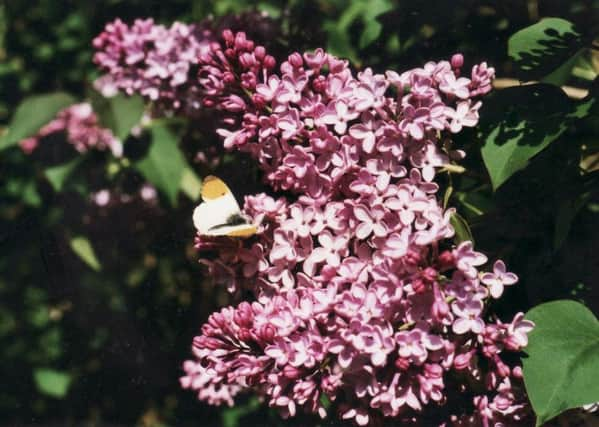Orange-tip is the first visitor to feast on lilac


Of course the season started in March this year with a few commas bursting out of their hibernaculae in the ivy covered oaks. (Why don’t more people keep the ivy on their oaks – it does no harm and provides a vast haven for wildlife from great tits to peacock butterflies.)
The male orange tips hurtled around at their standard two or three feet above the ground hunting first for females, and second for anything else that smelt sweet. They nectared on several different flowers, including wood anemones, cowslips, primroses, dog violets and finally my lilac.
Advertisement
Hide AdAdvertisement
Hide AdThere was also a good showing of small tortoiseshell butterflies at last. They have declined alarmingly over the past two decades. A pair mated in the garden and she had laid her eggs on the clump of nettles I make sure grows nicely on the edge of the manure heap, almost before the month was out: the month of March that is.
Then out of the ivy came all the brimstone butterflies. A dozen bright yellow males flew around looking for the one female – recognisable in her prim pale dress of slightly off-white muslin in which she palely loitered coyly in the windflowers hoping she might be noticed after all.
An errant chiffchaff is hanging about hoping to trap insects coming to the lilac. By the summer they have got trapping down to a fine art and snap even the biggest butterflies such as white admirals off the budleia. Once I watched one snapping half a dozen painted lady butterflies off the thistle flowers which I try to grow in the garden as a nectar source.
Meanwhile, back to this spring and the orange tips. Eventually female orange tips emerged and spent their days in April searching out the flowers of Cardimine pratensis, which is usually known as Cuckoo-flower in Sussex, and in Devon it is called Maid-of-the-Meadow. Another country name is Lady’s smock.
Advertisement
Hide AdAdvertisement
Hide AdIt is a beautiful upright flower about one foot tall, with a slender stem and a lovely bunch of pale lilac flowers for its crowning glory. Even the male orange tip butterflies like to nectar on this old meadow flower. It is, after all, the flower that nursed them as baby caterpillars last spring and summer. The female orange tips do not have orange tips at all, but smaller sooty smudges, on their wing tips.
Several other nursery plants have been used by these insects on which to rear their young. One strange plant is water cress. Another is Dame’s violet, an introduced, naturalised, garden plant found wild in about 35 places in West Sussex. You may know it as Hesperis matronalis and have its abundant flower heads on three foot stems in your border. Have you noticed female orange tips getting interested on this flower?